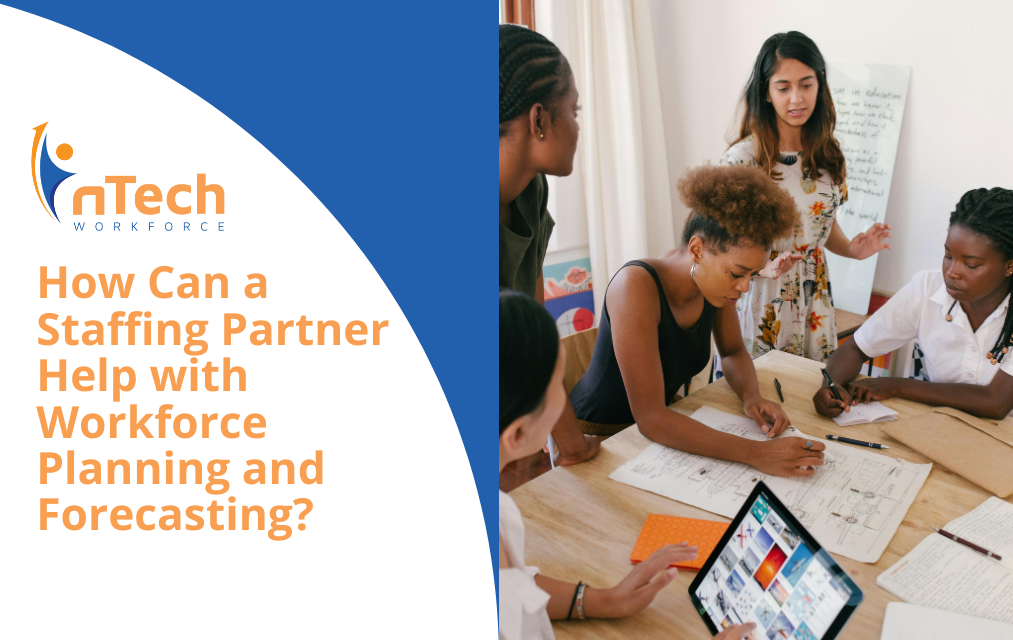How Can Staffing Agencies Help When We Only Have a Few Roles to Fill?
Has your organization ever thought, “We only need to hire a couple of people. Do we really need a staffing agency?” You’re not alone. Many businesses...

In today's dynamic business landscape, understanding different hiring arrangements is essential. One such arrangement is "Corp to Corp" (C2C), which stands for "Corporation to Corporation." Unlike traditional hiring methods, C2C involves a company hiring another company to provide services through its employees or contractors.
In this edition of our nSider blog, Steve McNamara, Director of Talent Delivery, explains what C2C means in the context of recruiting and how it can benefit your business.
In the realm of recruiting, corp-to-corp (C2C) arrangements involve a business-to-business dynamic wherein one company, referred to as the client, contracts with another company, known as the contractor, to render services through an independent contractor agreement.
McNamara notes, “This differs from the W2 model, where the contractor is an employee of the staffing agency or company, and the 1099 model, where the contractor is a self-employed individual. C2C engagements offer greater flexibility and control over the engagement terms and are typically used for specialized or project-based work.”
C2C engagements provide enhanced flexibility and control over the terms of the arrangement, making them particularly suitable for specialized or project-oriented tasks. This framework allows the client to engage with a contractor entity rather than an individual, thereby potentially streamlining administrative processes and mitigating certain liabilities.
Additionally, C2C setups allow both parties to negotiate terms tailored to their specific needs and preferences. These engagements often occur in sectors requiring specialized skills or for projects with defined scopes and timelines.
Remember that by leveraging C2C arrangements, companies can access a broader pool of talent, optimize resource allocation, and effectively manage project workflows, ultimately contributing to enhanced operational efficiency and project success.
Corp-to-corp (C2C) engagements provide advantages such as:
However, navigating C2C engagements entails a severe challenge/roadblock:
Despite these complexities, C2C engagements remain an attractive option for businesses seeking specialized expertise and flexibility in project execution. By carefully managing these challenges and leveraging the benefits of C2C arrangements, companies can optimize their resource allocation, access top talent, and drive project success.
Corp-to-corp (C2C) engagements significantly influence the recruitment process, shifting the focus from individual candidates to contracting with companies. This entails negotiating terms, evaluating the financial stability of contracting firms, and ensuring compliance with legal and regulatory standards.
Workforce management strategies must adapt to accommodate the distinct requirements of C2C contractors, including managing multiple client relationships, sustaining project flow, and mitigating conflicts of interest. Integrating C2C contractors into the workforce demands thorough onboarding and consistent communication to align their activities with organizational objectives. These contractors bring unique skills and perspectives, enriching the talent pool and enhancing project outcomes.
Effectively navigating C2C engagements requires a nuanced understanding of contractual obligations, legal frameworks, and strategic workforce planning. By proactively addressing these considerations, businesses can leverage C2C arrangements to access specialized expertise, optimize resource allocation, and drive innovation.
This ensures a, “Cultural fit between their organization and the contractor or staffing agency to ensure a successful partnership.” (McNamara).
When assessing C2C partnerships, businesses must thoroughly evaluate various factors to ensure successful collaboration:
By carefully considering these aspects, businesses can mitigate risks, optimize resource utilization, and maximize the benefits of C2C partnerships. Establishing clear expectations, fostering open communication channels, and maintaining transparency throughout the partnership lifecycle are essential for cultivating trust and achieving mutually beneficial outcomes.
Ultimately, a well-informed and strategic approach to evaluating C2C partnerships ensures alignment with organizational objectives and enhances the likelihood of project success.
Staffing agencies stand to significantly enhance their business prospects by leveraging Corp-to-Corp (C2C) engagements to broaden their clientele and service portfolio, thereby fostering growth. Offering C2C options enables agencies to attract clients in search of specialized expertise or project-specific services, thereby expanding their market reach.
For contractors, C2C arrangements afford unparalleled flexibility, empowering them to select projects and clients according to their preferences, thus bolstering work-life balance and overall job satisfaction. Negotiated rates and diminished administrative burdens associated with traditional employment models translate into enhanced profitability for both contractors and agencies alike. The inherent scalability of C2C engagements equips agencies with the agility to swiftly respond to evolving client needs and market dynamics, thereby cultivating a competitive edge and driving revenue growth.
McNamara comments, “By providing C2C options, staffing agencies can attract clients seeking specialized skills or project-based services.”
Corp to Corp (C2C) engagements offer significant advantages for businesses, staffing agencies, and contractors. By providing flexibility, specialized skills, and efficient project management, C2C can be a powerful tool in optimizing your workforce strategy.
At nTech Workforce, we specialize in connecting businesses with the right talent through various staffing solutions, including C2C. Ready to explore how C2C can benefit your organization? Contact us today to learn more and take the next step towards enhanced operational efficiency and project success.

Has your organization ever thought, “We only need to hire a couple of people. Do we really need a staffing agency?” You’re not alone. Many businesses...

What if we told you there was a better way to attract talent than a mere job posting?

When it comes to workforce planning and forecasting, many businesses face the same dilemma: how to predict and meet their staffing needs effectively.